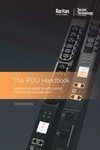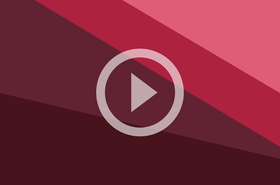Data centers traditionally have a large roomful of batteries so the IT equipment can ride out power outages until the generators can start up. These rooms necessitate lossy power conversion, so why not do away with them?
One power equipment provider, with a telco heritage, has a 48V rack system that includes lead-acid batteries within the racks instead.
“With every conversion of power, whether it's from AC to DC, or from DC to a lower voltage DC, you are losing energy,” says Vito Savino of OmniOn Power, a company which started out as a division of AT&T. Sent to Lucent at AT&T’s breakup, it has since gone through a series of owners, becoming ABB Power Conversion, before finally being spun out.
OmniOn sells 48V DC racks, somewhat like the hyperscaler’s OCP racks, linked to an AC building network, but the company eliminates the double AC/DC conversion at the UPS batteries, by shifting the batteries into the racks.
He points out that the traditional architecture, which is dominant across the world, takes AC power and converts it to DC to charge the UPS batteries, and then converts it back to AC.
“You've got all these conversions and a step-down, just so you've got some energy storage in the battery. And all that UPS is doing is giving you a little bit of holdover time, for a generator to start,” he says.
“Our approach is to take 48V AC, three-phase, all the way to in the rack, where you have your servers and storage and networking gear, and then convert it to DC in the rack. What you've got is just a single conversion.”
And each rack gets its own energy storage: “On the left side, you’ve got rectifiers mounted vertically, and batteries also mounted vertically. They are on the same bus, which goes vertically from the top of the rack to the bottom of the rack, feeding a standard 19-inch IT rack in the middle. It is a single cabinet, a few inches wider than the standard 19-inch rack.”
He rejects current fashion, sticking with traditional battery technology: “We do not use lithium because there are [safety] issues with lithium. We use VRLA [lead acid] battery packs that we have designed - and we also have nickel-metal hydride battery packs from a major supplier in Japan.”
He decries traditional UPS systems: “We've looked at the whole scope of power conversion inside the data center - and why do I need this monolithic beast that I have to pay upfront for the entire sizing of my data center? In most cases, it is not going to be generating revenue, and you're certainly not going to be using all of the capacity of that UPS for a long time. I just need some battery holdover for two minutes for the generator to start in the event that we lose grid power.”
The batteries are scaled to support up to 48kW per rack. It was “co-developed with a major service provider in the US,” he says. “We have thousands of these in their data centers today.”
He won’t name the customer, but with its background, OmniOn appears to work mostly for telecoms-heritage firms.
Are Microsoft and AWS doing it?
Hyperscalers have also spoken about putting batteries in their racks - but DCD is not convinced they are doing it to any great extent.
In 2015, Microsoft announced it was using a “distributed UPS” - lithium-ion batteries inside racks instead of a large battery room. In 2020, AWS showed a similar approach in a keynote speech in 2020, claiming that distributed battery backup removed the reliability issue of powering a data center from a single large battery room.
AWS engineer and evangelist Peter DeSantis described this as a “micro-UPS” in each rack. “Now the batteries can also be removed and replaced in seconds rather than hours. And you can do this without turning off the system.”
It’s not clear how far these ideas have been implemented in production systems. Microsoft contributed its distributed UPS to the Open Compute Project (OCP) as a Local Energy Storage (LES) specification, but neither Microsoft nor OCP has said anything in public about the idea since.
Microsoft’s data centers clearly still have large battery rooms, based on recent announcements, such as its plans to share battery energy with the grid in Ireland.
Amazon returned to its micro-UPS statement in its 2022 sustainability report which said its data centers no longer have a central UPS: “In AWS, the team spent considerable resource innovating on power efficiency, removing the central Uninterruptible Power Supply from our data center design, integrating power supplies into our racks.”
DCD has not been able to confirm with AWS whether this quote is in fact “aspirational” or if the company has actually stopped buying UPSs.




